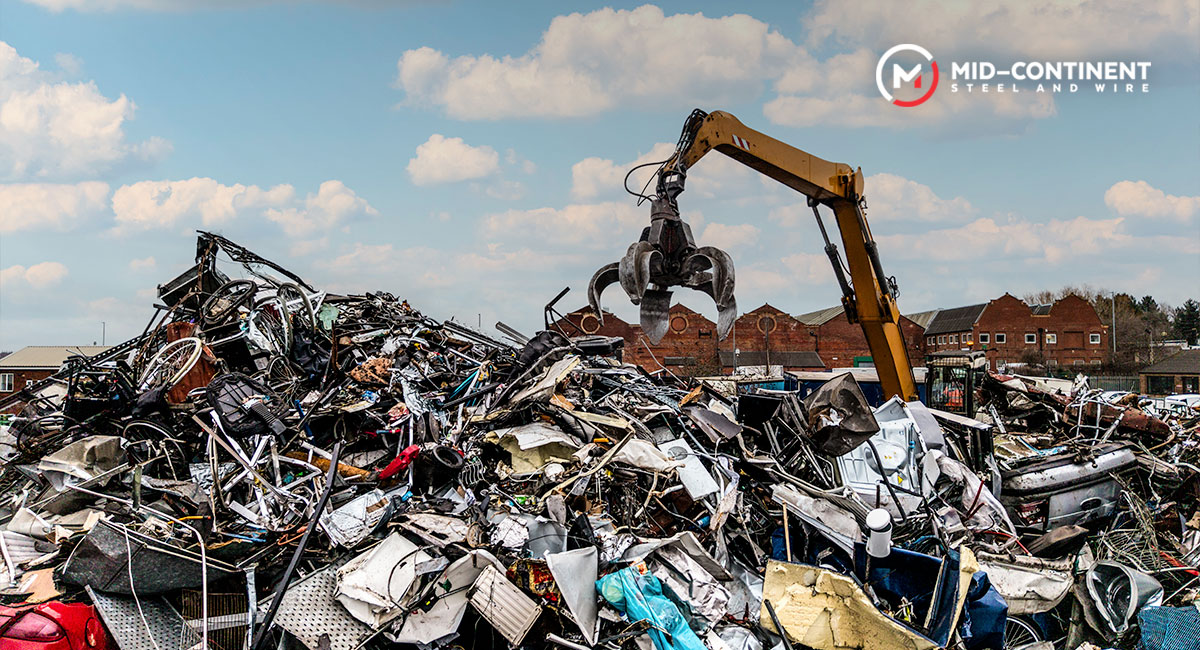
Steel is among the most commonly utilized materials worldwide, essential to sectors like construction, manufacturing, and many other industries. As global steel demand rises, the need for environmentally responsible production methods becomes more important. Recycling steel can minimize the ecological footprint of steelmaking, preserving natural resources. Let’s examine it supports the circular economy its significance in building a more sustainable future.
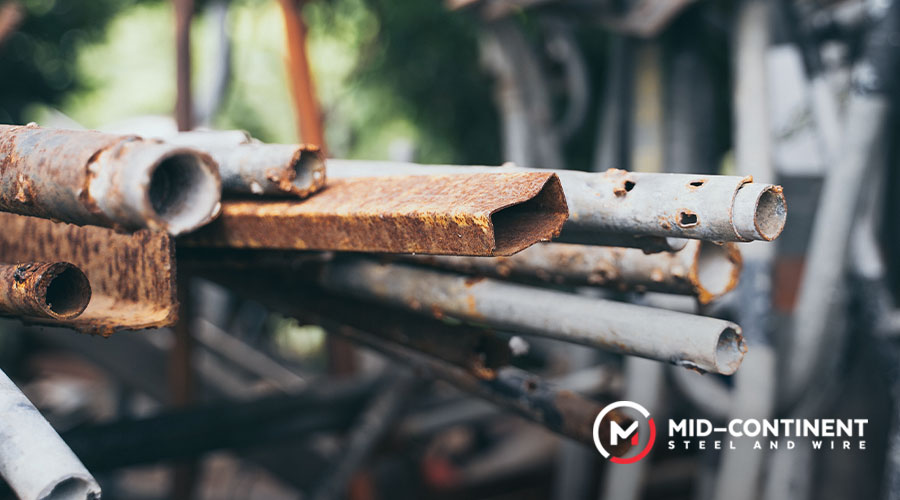
What is a circular economy?
The circular economy is a system of production and consumption focused on minimizing waste and making the most of available resources. In the conventional linear model, products are made, used, and then discarded. A circular economy emphasizes keeping materials in circulation for as long as possible by prioritizing recycling and reusing materials.
Steel is highly recyclable, its role in a circular economy involves:
- Efficiently collecting and processing scrap steel
- Using recycled steel to create new products
- Minimizing waste throughout the production cycle
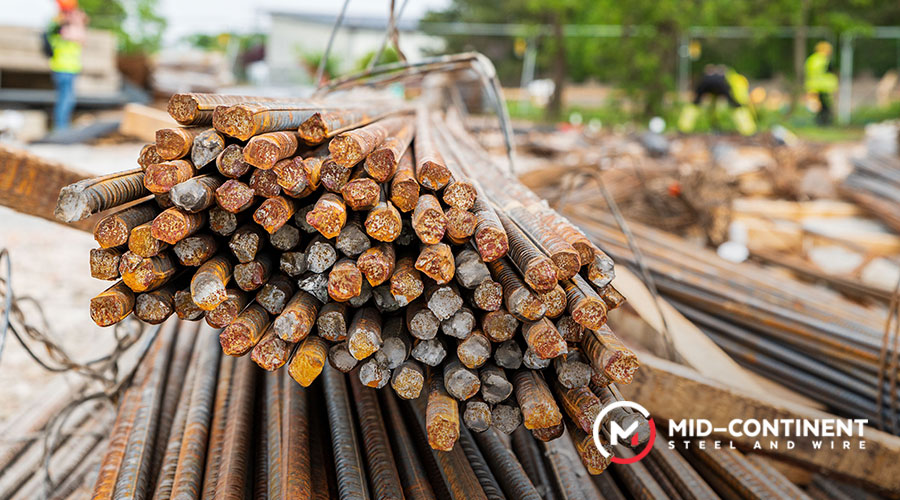
Benefits of steel recycling in the construction industry
As one of the most recycled materials in the world, steel can be reprocessed repeatedly without any loss in strength or quality, making it an ideal candidate for sustainable practices. The process of recycling steel reduces the need for raw material extraction, lowering energy consumption, decreasing greenhouse gas emissions, and minimizing the environmental impact caused by mining activities. Some of its environmental and economic benefits are:
- Energy savings: Recycling steel requires 60-74% less energy than producing steel from raw materials. This significant energy reduction translates to lower production costs and reduced carbon emissions.
- Reduced greenhouse gas emissions: This process produces far fewer greenhouse gas emissions compared to primary steel production.
- Conservation of natural resources: Recycling steel reduces the need for iron ore mining and coal extraction. For every ton of steel recycled, approximately 2,500 pounds of iron ore, 1,400 pounds of coal, and 120 pounds of limestone are conserved.
- Landfill waste reduction: Recycling helps preserve valuable land space and reduces the environmental impact of waste disposal.
- Economic benefits: It creates jobs and contributes to economic growth. It also helps stabilize steel prices by reducing dependence on raw material imports.
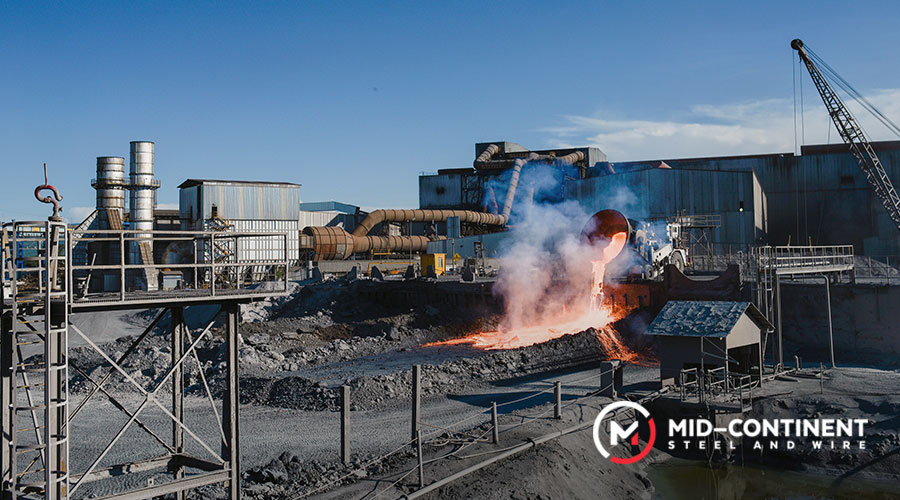
Sustainable steel recycling process
The steel recycling process involves several key steps for the efficient recovery and reuse of this valuable material. The steel recycling process involves several key steps:
- Collection: Steel scrap is collected from various sources, including industrial off-cuts and consumer recycling programs.
- Sorting: The collected scrap is sorted to separate steel from other materials and to classify different types of steel.
- Shredding: Large pieces of steel scrap are shredded into smaller, more manageable sizes.
- Melting: The shredded steel is melted in electric arc furnaces or basic oxygen furnaces.
- Purification: Impurities are removed from the molten steel to ensure high quality.
- Casting and shaping: The purified steel is cast into various forms for use in new products.
The future of steel manufacturing
The steel industry is continually innovating to improve recycling processes and overall sustainability with:
- Green steel initiatives: New technologies that reduce the environmental impact of steel production.
- Advanced sorting technologies: Improved methods for identifying and separating different types of steel, enhancing the quality of recycled steel.
- Design for recyclability: Manufacturers are increasingly designing products with recycling in mind, making future recycling more efficient.
- Closed-loop systems: Some companies are implementing closed-loop recycling programs to recapture and reuse their own steel scrap.
- Policy support: Governments worldwide are implementing regulations and incentives to promote steel recycling and circular economy principles.
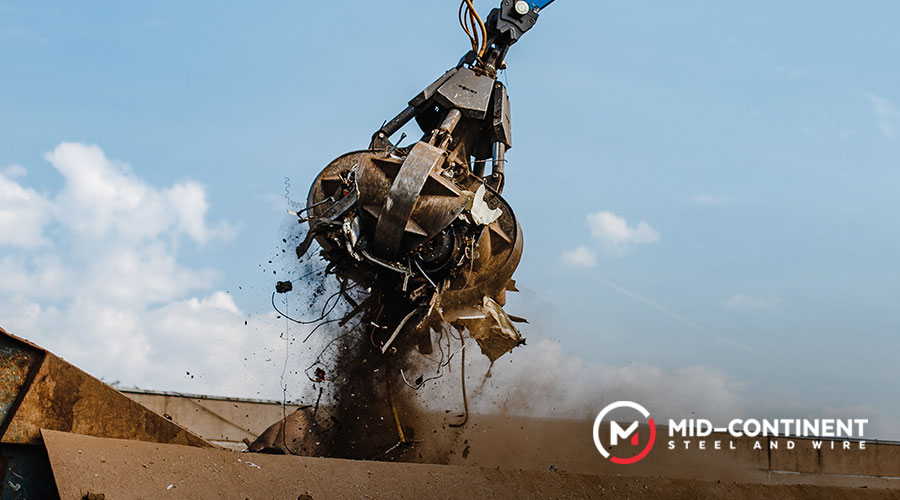
Mid-Continent sets the standard for green steel
By reducing energy consumption, conserving natural resources, and minimizing waste, steel recycling contributes to a more sustainable future. As we continue to face global environmental challenges, Mid-Continent Steel and Wire adapts to modern standards:
- 97% of the raw materials we use are sourced from scrap.
- An astonishing 99% of production leftovers go back into the manufacturing process.
- Steel is melted in electric arc furnaces (EAFs) powered primarily by electricity instead of coal, reducing CO₂ emissions per ton to approximately 85% less than the global average.
- We use renewable energy and treated water, further lowering our environmental footprint.
- Our processes contribute to LEED‑eligible credits, supporting greener buildings.
- We actively participate in initiatives like the UN Global Compact, US Green Building Council, CDP and SBTi.
Check out of wide catalog of sustainable solutions and contribute to a circular economy.

